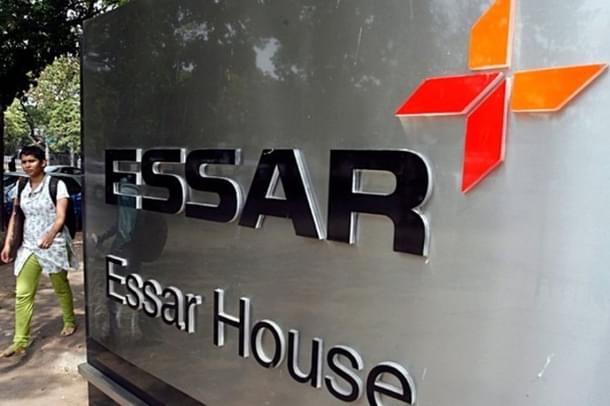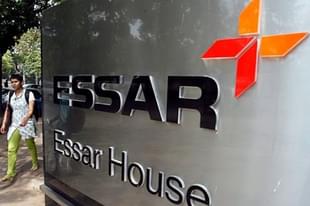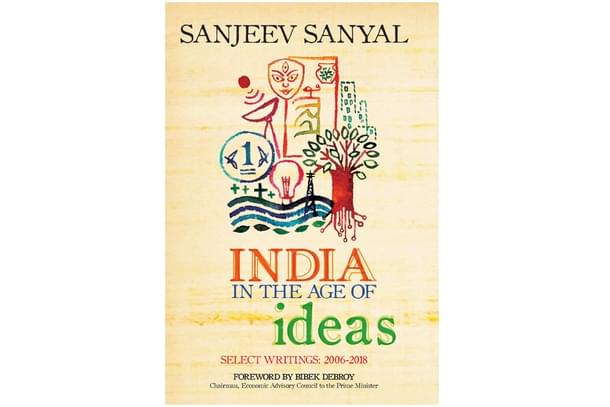Magazine
How IBC Provides A Much Needed Framework For Creative Destruction
Sanjeev Sanyal
Feb 02, 2019, 01:09 PM | Updated 01:09 PM IST
Save & read from anywhere!
Bookmark stories for easy access on any device or the Swarajya app.


India In The Age of Ideas: Selected Writings: 2006-2018. Sanjeev Sanyal. Westland. 336 pages. Rs 461.
One of the most important implications of the Complex Adaptive Systems framework is that the world is constantly changing and history can proceed down multiple paths. Applied to the world of business, this means that it is very difficult ex ante to work out precisely how companies will be impacted by technological, economic and policy changes. Even with the best intentions, one should expect business failure as a natural part of innovation and entrepreneurial risk taking. This is the basic idea behind the old Schumpeterian idea of ‘creative destruction’. Thus, the lynchpin of a country’s economic success is the ability to deal with continuous entry and exit of businesses. However, it was only in 2016 that India finally got a workable framework for this process in the form of the Insolvency and Bankruptcy Code. The following is a brief history of how this important reform came about. It is also a history of how our economic philosophy has changed.
A PREHISTORY OF IBC
Till 1985, the framework for dealing with corporate insolvency was the Company Act 1956. The law basically left the matter to regular courts and almost no thought was given to critical matters such as super-priority for insolvency costs, choice of liquidators, auction process, financial engineering and so on. The problem was that the law had been framed at a time when corporate failure was not seen as part of the natural creative destruction caused by technological shifts, changes in consumer behaviour, competition and so on. Instead, it was thought that in a rigorously-planned economy, business failures were occasional exceptions caused by deliberate fraud, and perhaps the odd planning failure. The solution was to tighten up planning and licensing, not smoothen out bankruptcy processes.

Individual bankruptcy was dealt under even more archaic laws such as the Presidency Towns Insolvency Act 1909. Again, insolvency was seen as mostly the result of irresponsible behaviour rather than the natural consequence of risk-taking. Presumably this world view parallels that of the early twentieth century’s literary image of dissolute sons of zamindars throwing away their family wealth on wine and women. As one can see, mental frameworks of the times have a big impact on the kind of laws that get passed.
By the mid-1980s, it was obvious that something had to be done about the large number of accumulating insolvency cases. The response was the Sick Industrial Companies Act 1985 (SICA) which led to the foundation of the Board of Industrial and Financial Reconstruction (BIFR). Although the failure of socialist planning should have been obvious by now, there was still a touching belief that insolvent companies could be nursed back to health under the benign watch of the State. Inevitably, BIFR became a warehouse where corporate assets festered for years.
Meanwhile, Section 22 of SICA was regularly misused by unscrupulous promoters to delay enforcement of creditor rights. The passage of the Recovery of Debts Due to Banks and Financial Institutions Act 1993 did not materially change the situation.
FRAMEWORK FOR CREATIVE DESTRUCTION
The liberalisation of the economy in the 1990s led to a major shift in the mental framework. The economy was now seen as a dynamic system responding to all kinds of changes— technology, domestic policy, international trade and so on. Corporate failure was now seen as part of risk-taking and innovation. The bankruptcy process needed to be a routine mechanism for liquefying economic assets and repurposing them to more efficient uses or competent managers. Moreover, an assertion of creditor rights was seen as key to changing business culture.
The first attempt to incorporate the new thinking was the Securitisation and Reconstruction of Financial Assets and Enforcement of Security Interest Act 2002 (SARFESI). Although SARFESI did lead to some improvements in the recovery process, it dealt only with secured assets and it was soon clear that a more comprehensive framework was needed. A commission led by Justice Srikrishna followed by a committee headed by T.K. Viswanathan looked into the matter. The latter presented a detailed report in 2015 and shortly thereafter a draft bill was presented in parliament. This was how the Insolvency and Bankruptcy Code (IBC) came into being in 2016.
CLEANING THE BANKS
Even as the government was drafting IBC, it was dealing with a worsening problem—the rapid accumulation of Non-Performing Assets (NPAs) in the banking system, particularly public sector banks. It was the legacy of an unrestrained lending binge from 2006–12. The RBI Governor, Raghuram Rajan responded by pressuring the banks to aggressively recognise problem loans. This meant that problem loans could no longer be routinely rolled over in old-style ever-greening. Second round effects of tightening credit conditions exposed even more stressed assets.
By end 2016, it was clear that a stronger approach was needed to deal with the pile of NPAs. One solution was to create a ‘bad bank’ where all the NPAs could be housed pending resolution but, there was a concern that it would become a festering warehouse like BIFR. So it was decided to directly use the new IBC framework. The obvious problem was the IBC framework and its institutions like NCLT were brand new and untested.
Fortunately, there was one feature of the NPA problem that could be exploited—it was concentrated in fifty of the largest cases. The Ministry of Finance and RBI decided that even a new framework should be able to deal with such a small number. In fact, twelve of the largest cases were identified and entered into the IBC process in mid-2017. Some of these large cases used up the 180 plus ninety days mandated under the IBC from May 2018. One of them, Bhushan Steel was sold off for 35,000 crores (plus equity stake). Several others such as, Amtek Auto, Monnet Ispat and Electrosteel followed (these three together collected approximately 12,500 crores). At the time of writing, there was another mega sale being finalised—Essar Steel.
The successful completion of these cases demonstrates that insolvency and bankruptcy is becoming routine in India. Processes, precedents and institutions are getting systematically created. The creditors, meanwhile, are themselves organising an ecosystem of professionals and creditor committees to deal with insolvency. Therefore, India has finally evolved a rule-based framework for risk-taking and creative destruction. This does not mean that things are now flawless but, after seven decades, we have a workable framework that, with continuous improvement, can serve India for generations. This is an important milestone in India’s economic history.
(The author is an economist and bestselling writer. All opinions are personal).




